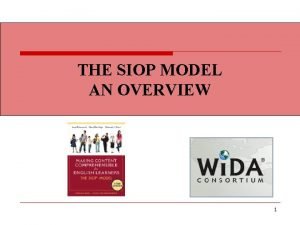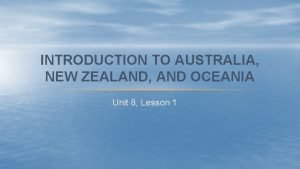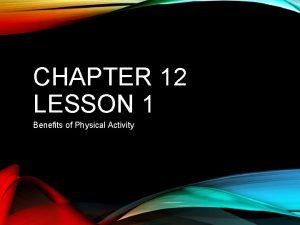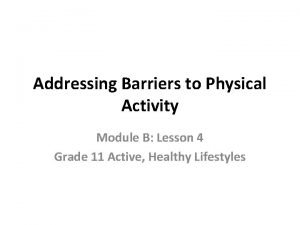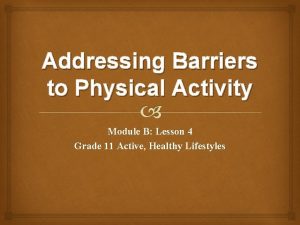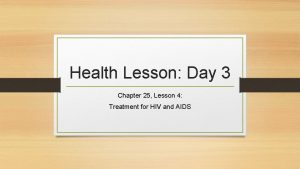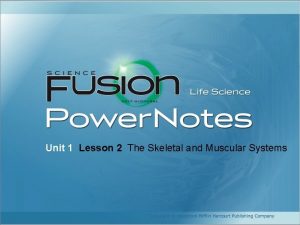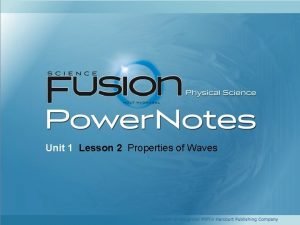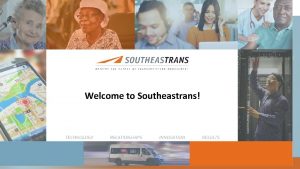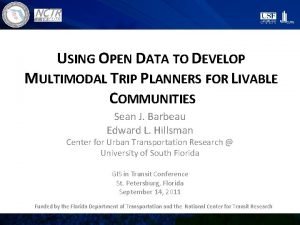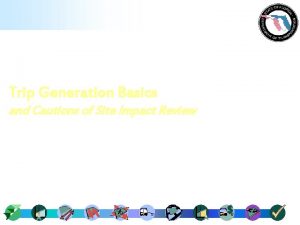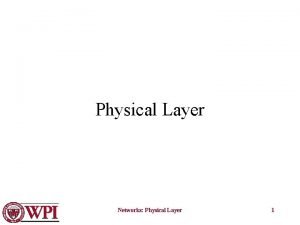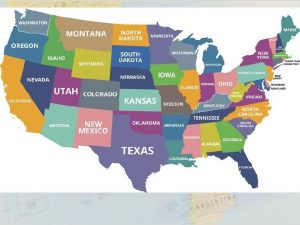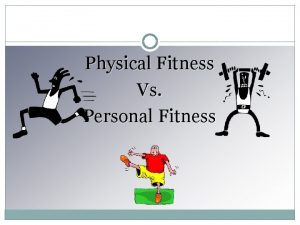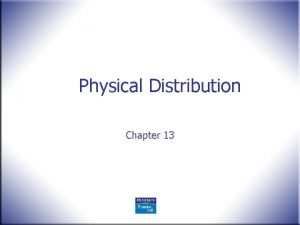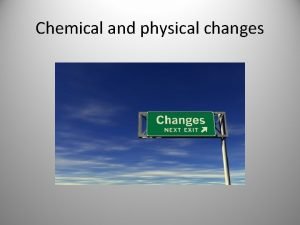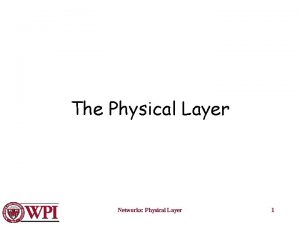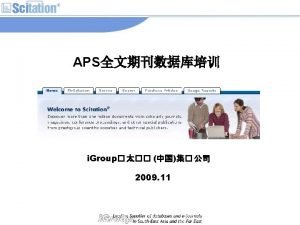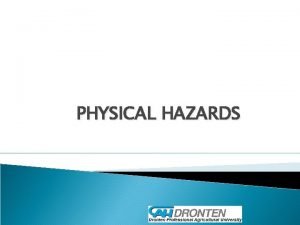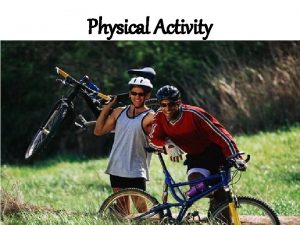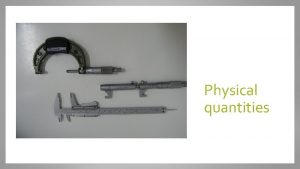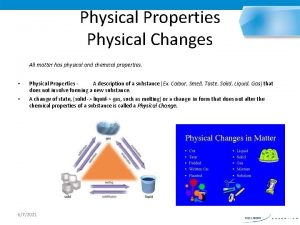TRIP PREPARATION Trip Preparation Lesson 1 PHYSICAL PREPARATION



















































- Slides: 51

TRIP PREPARATION

Trip Preparation: Lesson 1 PHYSICAL PREPARATION

Primary Job Demands • Physical – Vehicle inspections – Loading/unloading luggage – Vehicle maneuvering and control – Assisting passengers on/off vehicle • Mental – Maintaining focus on driving for long periods of time – Dealing with passengers – Managing unusual situations

Two Types of Fatigue Internal Fatigue Factors: – Amount of recent sleep – Time of day – Time awake – General health – Mood Task-Related Fatigue Factors: – Time on task – Task monotony – Task complexity

Proper Sleep • Sleep is a biological need, just like eating • Good sleep promotes wellness and optimum performance • Poor sleep contributes to: – Weight gain – Diabetes – Cardiac conditions – Psychological disorders

Importance of Sleep • Falling asleep at the wheel and driver fatigue are top causes of serious CMV crashes – Medical crisis another cause of serious crashes • Others are at risk too: – Your passengers – Other vehicles & their passengers; pedestrians – Company reputation and viability

Personal Responsibility • Proper sleep necessary for attentiveness and overall well-being • Personal responsibility for managing off-duty periods – Must be able to understand & prioritize necessities, including proper rest

Sleep & Well Being • Two stages: Non-REM (regular) & REM • Adults: need 7 -8 hours per night • As you age: – Lighter sleep – Sleep more easily disrupted

Sleep Quality • Quantity affects quality • Time of Day • Environment – Bed comfort – Darkness – Noise – Temperature

Sleep Effects on Performance

Sleep Disorders • General symptoms: – Excessive daytime sleepiness – Extremes in ability to go to sleep Sleep immediately, almost anywhere Can’t sleep, even under ideal conditions • Sleep Apnea: Loud snoring, especially accompanied with gasping or pauses in breathing – High Risk = overweight, large neck, family history

Circadian Rhythms • “Body clock” • Physiological changes • Occur even when you get plenty of sleep • Influence sleep/wake cycles • Can enhance danger of a fatigued condition

Circadian Rhythms

Learning from History March 12, 2011 Bronx, NY

Learning from History 32 passengers 17 injured 15 killed

Learning from History e s u a C Probable • Driver’s failure to control the motorcoach due to fatigue • Driver sleep and duty schedule prior to crash

Wellness

Weight • 75% of commercial drivers overweight • Increased risk of: – Heart disease – High blood pressure – Diabetes – Sleep Apnea – Injury Body-Mass Index (BMI) (Weight/Height 2) x 703 Weight = lbs. ; height = inches <25 = normal/healthy 25 -30 = overweight >30 = obese

Diet & Nutrition • Poor diet choices can affect: – Alertness – Perception – Reaction time – Overall driving concentration & ability • Smart food choices maximize alertness and energy levels

Balanced Diet Food Group Servings (Daily) Fruits 2 -4 Vegetables 3 -5 Breads/grains Dairy products Meats & proteins Fats 6 -11 2 -3 1 -3 Examples Fruit juice, bananas, apples Carrots, broccoli, vegetable/tomato juice Cereal, bread, potatoes Milk, cheese, yogurt Chicken, fish, beef, beans Nuts, avocado, olive oil

Diet Tips • Portion control – Smaller is better – Use visual clues • Eat throughout day • Avoid large meals before main sleep period and immediately before driving • Foods high in fiber and protein • Stay hydrated

Better Food Choices Choose This Broth-based soups & sauces Low-fat dairy products & fats Grilled or Baked Stay Clear Creamy soups & sauces Full fat milks, cheese and mayo Fried foods Water Sugary drinks (sodas, sweet tea, etc. ) Fruit & vegetable smoothies Healthy carbs Fruit Vegetables Milkshakes Unhealthy carbs Dessert Potato chips

Exercise • Improves digestion • Weight reduction/control • Reduces stress • Reduces disease risk • Raises energy level • Maintain strength/flexibility Aerobic: 2. 5 hrs. /week Strength: 2 x/week

Exercise Tips • Find out what you like to do • Workout more vigorously on days off, but do not forgo just because you are working! Set Goals: Daily & Weekly Start Simple!

Stress • Symptoms – Headaches – Sleep disturbances – Low morale – Hard to concentrate – Short temper

Positive Behaviors • Balance between work and personal life • Personal pursuits • Positive outlook • Take time to relax – Read – Watch TV – Daydream – Short walk (exercise can be relaxing for some!)

Positive Relationships • Lack of family time unhealthy • Emotional concerns can lead to: – Unsafe driving behaviors – Distracted driving • Strategies: – Keep in touch, communicate – Be positive – Do things together when not working

Trip Preparation: Lesson 2 ALCOHOL, CONTROLLED SUBSTANCES, & MEDICATIONS

Alcohol Use Myth #1 Myth #2 Myth #3 Myth #4 Myth #5 Some people can drink without being affected. If you eat a lot before or after drinking, it will negate the effects of the alcohol. Coffee and fresh air will help a drinker sober up. If I drink a lot of water after drinking, it will help get the alcohol out of my system faster. Beer is not as strong as wine or liquor.

Alcohol Prohibitions (Employer) • Illegal to consume alcohol: – within 4 hours prior to driving; – within 8 hours after DOT-recordable accident; and – any time while on-duty. • DOT alcohol program test result: – If BAC ≥. 02% and <. 04%, you will not be permitted to drive CMV for at least 24 hours. – BAC ≥. 04% is a positive test

Alcohol Prohibitions (Driving) • If stopped while driving and if your alcohol concentration is ≥. 04%, you will be cited for a CDL DWI/DUI offense. • If convicted by court, your CDL licensing agency must disqualify your CDL privilege for: – 1 st conviction = 1 year – 2 nd conviction = lifetime (55 years)

Controlled Substances • 5 illegal drugs/controlled substances whose use is not permitted (positive test = disqualification) Drug Includes Marijuana (THC) Legal, prescribed, medical-use marijuana Cocaine - Amphetamines Amphetamine; Methamphetamine; MDMA; MDEA Opiates Opioids (Oxycodone, Hydrocodone, etc. ); Heroin Phencyclidine (PCP) -

Controlled Substances • Driving of CMV not permitted if using any controlled substance on Schedule I at 21 CFR 1308. 11 • Other controlled substance use permitted only when: “prescribed by a licensed medical practitioner, who is familiar with the driver's medical history and has advised the driver that the substance will not adversely affect the driver's ability to safely operate a commercial motor vehicle. ”

OTC Medications • Bought without prescription • Read all labels carefully for warnings • Many have side effects and warnings, including: – Drowsiness – Avoid driving and operating heavy machinery If an OTC medication hasn’t been used before, drivers should test for side effects before using while driving a CMV

Alcohol & Sleep • Alcohol actually disrupts sleep – Disturbs REM and NREM sleep stages – Causes “rebound awakening” after a few hours Alcohol + Sleep • Disruptive effects increase with age • Makes sleep apnea conditions worse

Stimulants • Many OTC stimulants – effects can vary widely – Increase heart rate and metabolism, sometimes dangerously – Do not increase performance reliably – Often cause ‘crash’ several hours after use • Nicotine – Does not improve alertness or performance – Reduces oxygen flow to the brain

Sleep Aids • Sleeping Pills - OTC versions (Benadryl, etc. ) and prescription – Many have side effects and are habit-forming – Must allow necessary time for drug to leave your body before driving – Some have withdrawal symptoms • Alternate: Supplements & herbal teas – Contain natural hormones related to sleep (e. g. , Melatonin)

Trip Preparation: Lesson 3 TRIP PLANNING AND VERIFICATION

Types of Trips • Local Trips: short distances, single day – Shuttles – Transfers • Extended trips: various distances and durations – Regular/Fixed route, inter-city – Multi-day charter/tour – Relay & relief

US Roadway System • Interstate highway system • Toll roads • US highways • State primary routes • Local highways & streets 225

Maps Map Type Description Specific to a city or Local /Area Map area (e. g. , Northern Ohio) State/Region Map National/Intern ational Atlases Details The most detail of local streets and routes. May have information relevant to commercial vehicles (restrictions/low clearances, etc. ) Specific to state or region (e. g. , – New England) Detailed road information regarding state or region covered; less detailed than local map. Contain roadway maps for all 50 states and possibly bordering countries. Best resource for commercial drivers. More detailed maps of large metropolitan areas are usually included. Special versions, designed for commercial vehicle drivers, include relevant information for commercial vehicle operations.

Map Reading • North usually at top (look for compass/indication) • Key/Legend – explains map markings • Map helpful features: – Distance indicators – Mileage charts – Index and locating system

Trip Familiarization/Planning • Review: – Distances/time allotted for overall duty periods – Distances/time allotted for time critical stops (if any) Distance / Driving Time Allotted = Average Speed Carefully review average speed calculated for legs and duty periods for potential hours of service or scheduling issues

Trip Familiarization/Planning • Is distance covered reasonable? • Are average speeds realistic? – generally 5 -15 mph lower than cruising speed Speed Limit = 55 65 Rule of thumb max – 10 hrs 500 miles 550 miles • Review itinerary for necessary off-duty time to maintain compliance with hours of service

Concerns & Issues • Low clearance obstacles • Prohibited bus lanes • Weight-restricted bridges • Prohibited routes

Distance/Fuel Calculations • Need: average MPG and fuel tank capacity Cruising range = Tank capacity x Average MPG Ex. : 230 (gallons) x 5. 5 (MPG) = 1, 265 miles • Verify planned/plan fuel stops accordingly – Average MPG can vary depending on many factors; do not use high estimates to determine range – Do not fuel with passengers on board

Routing Considerations • Interstate/Highways – Limited height/weight restrictions – Multiple lanes – Constant speed/less stop & go • Better fuel efficiency • More consistent ride for passengers

State Laws • For each state traveling through, should know: – Weigh station/Port of entry locations & protocol for motorcoaches – Idling limits and exceptions – Any special trip permits necessary – Tire chain requirements – Helpful phone numbers - road construction and conditions, DOT, etc.

Weather & Road Conditions • Sources for road and weather information (if necessary) should be gathered/noted for each state the trip is operating through – State DOT hotlines/websites – Weather-specific websites/hotlines

Personal Preparation • Expenses that must be covered • Review of trip schedule – When are you driving? – Time zone changes? • May need to shift your sleep/awake patterns • Travel kit – Sleep aids – Medicines

Personal GPS • Must be designed specifically for commercial vehicles – Be sure to enter vehicle information (height, width, length, axle weights) so proper routes can be determined • Do not blindly trust – pay attention to signage when driving!
 Billy once upon a time
Billy once upon a time Lesson 2 physical properties answer key
Lesson 2 physical properties answer key Physical rate fences example
Physical rate fences example Physical fitness test grade 9
Physical fitness test grade 9 Language spanish
Language spanish Lesson 5 it is all in the preparation
Lesson 5 it is all in the preparation Lesson 1 an introduction to oceania
Lesson 1 an introduction to oceania Lesson 1 physical geography of southeast asia
Lesson 1 physical geography of southeast asia Definition of eastern europe
Definition of eastern europe Chapter 12 physical activity and fitness
Chapter 12 physical activity and fitness Chapter 12 physical activity and fitness answer key
Chapter 12 physical activity and fitness answer key Assure model lesson plan physical education
Assure model lesson plan physical education Physical changes lesson 3 outline
Physical changes lesson 3 outline Which is true about chemical change
Which is true about chemical change Lesson 1 physical geography of south america
Lesson 1 physical geography of south america Chapter 12 lesson 3 planning a personal activity program
Chapter 12 lesson 3 planning a personal activity program Chapter 7 lesson 2 human geography of mexico
Chapter 7 lesson 2 human geography of mexico What states are west of the mississippi river
What states are west of the mississippi river Lesson 4 barriers to physical activity
Lesson 4 barriers to physical activity Lesson 4 barriers to physical activity
Lesson 4 barriers to physical activity Continent of nepal
Continent of nepal Chapter 25 lesson 1 health
Chapter 25 lesson 1 health Lesson outline lesson 3 describing circuits answers
Lesson outline lesson 3 describing circuits answers Kind of fault
Kind of fault Lesson outline lesson 2 aquatic ecosystems answer key
Lesson outline lesson 2 aquatic ecosystems answer key Lesson plan micro teaching
Lesson plan micro teaching L101 introduction to healthcare leadership
L101 introduction to healthcare leadership What did meena do when paati saw her with a glass of milk?
What did meena do when paati saw her with a glass of milk? Chapter 1 lesson 1 your total health
Chapter 1 lesson 1 your total health Lesson outline lesson 3 weather forecasts answer key
Lesson outline lesson 3 weather forecasts answer key Sat vocabulary lesson 4
Sat vocabulary lesson 4 Lesson 1 thermal energy and the behavior of matter
Lesson 1 thermal energy and the behavior of matter Lesson outline climates of earth
Lesson outline climates of earth Lesson outline lesson 1
Lesson outline lesson 1 Understanding science worksheet answers lesson 1
Understanding science worksheet answers lesson 1 Characteristic of fingerprint
Characteristic of fingerprint Unit 1 lesson 1
Unit 1 lesson 1 Lesson 4 gravity and motion lesson review
Lesson 4 gravity and motion lesson review Lesson 2 muscle storyboard
Lesson 2 muscle storyboard Wave properties lesson 2
Wave properties lesson 2 Today's lesson or today lesson
Today's lesson or today lesson 1 important lesson that is worth sharing about this lesson
1 important lesson that is worth sharing about this lesson Example of repitition
Example of repitition Magnets and magnetic fields lesson 1 answer key
Magnets and magnetic fields lesson 1 answer key Lesson outline lesson 3 eclipses and tides answer key
Lesson outline lesson 3 eclipses and tides answer key Read the travel advertisement
Read the travel advertisement Vacation wbs for trip planning
Vacation wbs for trip planning Southeastrans portal
Southeastrans portal 511 transit trip planner
511 transit trip planner Usf bull sync
Usf bull sync Where are rainforests located
Where are rainforests located Trip generation
Trip generation




